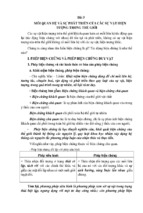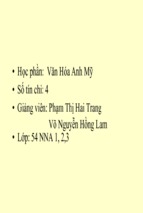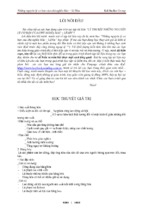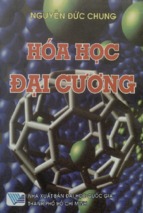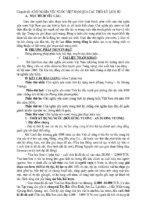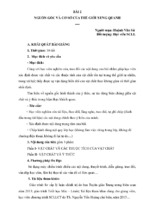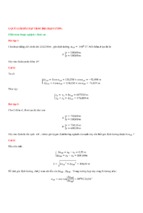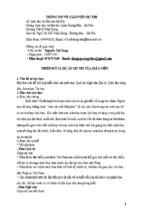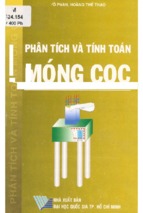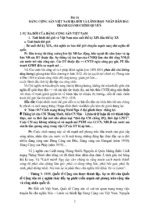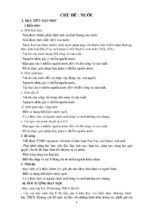Downloaded from ascelibrary.org by RMIT UNIVERSITY LIBRARY on 01/03/19. Copyright ASCE. For personal use only; all rights reserved.
International
Low Impact
Development
Conference 2016
Mainstreaming Green Infrastructure
Proceedings of the International
Low Impact Development Conference 2016
Portland, Maine
August 29–31, 2016
Edited by
Robert Roseen, Ph.D., P.E., D.WRE
Virginia Roach, P.E.
James Houle, Ph.D.
Downloaded from ascelibrary.org by RMIT UNIVERSITY LIBRARY on 01/03/19. Copyright ASCE. For personal use only; all rights reserved.
INTERNATIONAL LOW IMPACT
DEVELOPMENT CONFERENCE
2016
MAINSTREAMING GREEN INFRASTRUCTURE
PROCEEDINGS OF THE INTERNATIONAL LOW IMPACT
DEVELOPMENT CONFERENCE 2016
August 29–31, 2016
Portland, Maine
SPONSORED BY
New England Water Environment Association
Environmental and Water Resources Institute
of the American Society of Civil Engineers
EDITED BY
Robert Roseen, Ph.D., P.E., D.WRE
Virginia Roach, P.E.
James Houle, Ph.D.
Published by the American Society of Civil Engineers
Downloaded from ascelibrary.org by RMIT UNIVERSITY LIBRARY on 01/03/19. Copyright ASCE. For personal use only; all rights reserved.
Published by American Society of Civil Engineers
1801 Alexander Bell Drive
Reston, Virginia, 20191-4382
www.asce.org/publications | ascelibrary.org
Any statements expressed in these materials are those of the individual authors and do not
necessarily represent the views of ASCE, which takes no responsibility for any statement
made herein. No reference made in this publication to any specific method, product, process,
or service constitutes or implies an endorsement, recommendation, or warranty thereof by
ASCE. The materials are for general information only and do not represent a standard of
ASCE, nor are they intended as a reference in purchase specifications, contracts, regulations,
statutes, or any other legal document. ASCE makes no representation or warranty of any
kind, whether express or implied, concerning the accuracy, completeness, suitability, or
utility of any information, apparatus, product, or process discussed in this publication, and
assumes no liability therefor. The information contained in these materials should not be used
without first securing competent advice with respect to its suitability for any general or
specific application. Anyone utilizing such information assumes all liability arising from such
use, including but not limited to infringement of any patent or patents.
ASCE and American Society of Civil Engineers—Registered in U.S. Patent and Trademark
Office.
Photocopies and permissions. Permission to photocopy or reproduce material from ASCE
publications can be requested by sending an e-mail to
[email protected] or by locating a
title in ASCE's Civil Engineering Database (http://cedb.asce.org) or ASCE Library
(http://ascelibrary.org) and using the “Permissions” link.
Errata: Errata, if any, can be found at https://doi.org/10.1061/9780784480540
Copyright © 2017 by the American Society of Civil Engineers.
All Rights Reserved.
ISBN 978-0-7844-8054-0 (PDF)
Manufactured in the United States of America.
International Low Impact Development Conference 2016
Preface
Downloaded from ascelibrary.org by RMIT UNIVERSITY LIBRARY on 01/03/19. Copyright ASCE. For personal use only; all rights reserved.
The International Low Impact Development Conference was held in Portland, Maine
in August of 2016. The Proceedings presented here represent a slice of the interesting
and timely content that was presented at the conference. The conference this past year
highlighted the mainstreaming of Green Infrastructure and Low Impact Development
in municipal programming as well as new and existing work and research in the United
States and internationally. We are excited to announce that the 2016 LID conference
led to a spin-off conference entitled Operations and Maintenance of Stormwater
Control Measures that will be coming to Denver, Colorado in November 2016. We
hope that these proceedings provide the in-depth information that you are looking for
and we look forward to seeing you at the next LID conference in 2018!
Acknowledgments
Preparation and planning are the key to a successfully executed conference so we
would like to recognize the hard work of the Conference Steering Committee and
also others that are not mentioned here.
Conference Chair
Rob Roseen, PH.D., P.E., D.WRE
Waterstone Engineering
Conference Co-Chairs
Virginia Roach
CDM Smith
James Houle
UNH Stormwater Center
Technical Program Chair
James Houle
UNH Stormwater Center
Technical Program Vice Chairs
Bethany Eisenberg
Vanasse Hangen Brustlin Inc
William Arcieri
Vanasse Hangen Brustlin Inc.
© ASCE
iii
International Low Impact Development Conference 2016
Local Host Chair
Curtis Bohlen
Casco Bay Estuary Program
Downloaded from ascelibrary.org by RMIT UNIVERSITY LIBRARY on 01/03/19. Copyright ASCE. For personal use only; all rights reserved.
Rachel Rouillard
Piscataqua Regions Estuary Partnership
Workshop and Field Trip Coordinator Chair
James Houle
UNH Stormwater Center
Workshop and Field Trip Coordinator Vice-Chair
Jami Fitch
Cumberland County Soil & Water Conservation District
Past LID conference Member
Scott Struck
Geosyntec
Finally, we acknowledge and thank the staff of the EWRI of ASCE, who, in the end,
make it all happen.
Director, EWRI
Brian K. Parsons, M.ASCE
Technical Manager, EWRI
Barbara Whitten
Senior Coordinator, EWRI
Veronique Nguyen
Conference Manager
Cristina Charron
Conference Coordinator
Rachel Hobbs
Sponsorship and Exhibit Sales Manager
Sean Scully
Registrar
Nives McLarty
© ASCE
iv
International Low Impact Development Conference 2016
Contents
Downloaded from ascelibrary.org by RMIT UNIVERSITY LIBRARY on 01/03/19. Copyright ASCE. For personal use only; all rights reserved.
Cistern Performance for Stormwater Management in Camden, NJ ........................................1
Farzana Ahmed, Michael Borst, and Thomas O’Connor
Low Impact Development for Controlling Highway Stormwater Runoff—Performance
Evaluation and Linkage to Cost Analysis ....................................................................................9
Azadeh Akhavan Bloorchian, Jianpeng Zhou, Abdolreza Osouli, Laurent Ahiablame,
and Mark Grinter
How the Implementation of Green City, Clean Waters in Philadelphia Advances
Modeling Capabilities across the Program................................................................................16
Eileen Althouse, Edward Lennon Jr., and Julie Midgette
Addressing Water Scarcity in South Africa through the Use of LID .....................................20
L. N. Fisher-Jeffes, N. P. Armitage, K. Carden, K. Winter, and J. Okedi
Development of a Low Impact Development and Urban Water Balance Modeling
Tool ................................................................................................................................................29
Steve Auger, Yuestas David, Wilfred Ho, Sakshi Sani, Amanjot Singh, Tim Van Seters,
Chris Davidson, Melanie Kennedy, and Kevin MacKenzie
Simulation of the Cumulative Hydrological Response to Green Infrastructure ...................43
Pedro M. Avellaneda, Anne J. Jefferson, and Jennifer M. Grieser
Dual Opportunity for Education and Outreach to Evaluate Benefits of GI
Implementation ............................................................................................................................52
Leslie Brunell and Elizabeth Fassman-Beck
Examination of Empirical Evidence and Refining Maintenance Techniques for GI ............65
Amirhossein Ehsaei and Thomas D. Rockaway
Comprehensive Benefits Assessment with as a Step toward Economic Valuations of
Ancillary Benefits of Green Storm Water Infrastructure and Non-Structural
Storm Water Quality Strategies in San Diego, California .......................................................78
Clem Brown, Richard Haimann, and Chris Behr
A New Method for Sizing Flow-Based Treatment Systems to Meet Volume-Based
Standards ......................................................................................................................................89
Kelly L. Havens, Zachary J. Kent, and Aaron Poresky
Evaluating the Real Estate Development and Financial Impacts of the San Diego
Region’s Post-Construction Standards and Alternative Compliance Program:
A Multi-Disciplinary Effort ........................................................................................................98
Juli Beth Hinds
© ASCE
v
International Low Impact Development Conference 2016
Downloaded from ascelibrary.org by RMIT UNIVERSITY LIBRARY on 01/03/19. Copyright ASCE. For personal use only; all rights reserved.
Estimating Monetized Benefits of Groundwater Recharge from Stormwater
Retention Practices ....................................................................................................................106
John Kosco, Lisa Hair, Jonathan Smith, and Heather Fisher
Design Parameters for Manufactured Soils Used in Storm Water Treatment,
Wetland Restorations, and LID Projects .................................................................................114
Geoffrey Kuter, David Harding, and Mike Carignan
Performance Optimization of a Green Infrastructure Treatment Train Using
Real-Time Controls ....................................................................................................................123
C. Lewellyn, B. M. Wadzuk, and R. G. Traver
Greening Indiana—One Training at a Time ...........................................................................131
Sheila McKinley
Update to Permeable Pavement Research at the Edison Environmental Center ................135
Thomas P. O’Connor and Michael Borst
Full-Scale Structural Testing of Permeable Interlocking Concrete Pavement to
Develop Design Guidelines ........................................................................................................143
David J. Jones, Hui Li, Rongzong Wu, John T. Harvey, and David R. Smith
Developing Low Impact Development (LID)-Based District Planning (DP)
Techniques and Simulating Effects of LID-DP .......................................................................155
C. H. Son, J. I. Baek, D. H. Kim, and Y. U. Ban
Green Infrastructure Performance Model in the Real World: Modeling Natural
and Simulated Runoff Events ...................................................................................................163
Stephen White, Tyler Krechmer, Taylor Heffernan, Nicholas Manna,
Elizabeth Mannarino, Chris Bergerson, Mira Olson, and Jason Cruz
Winter Road Salting in Parking Lots: Permeable Pavements vs. Conventional
Asphalt Pavements .....................................................................................................................173
H. Zhu, J. Drake, and K. Sehgal
© ASCE
vi
International Low Impact Development Conference 2016
Cistern Performance for Stormwater Management in Camden, NJ
Farzana Ahmed1; Michael Borst2; and Thomas O’Connor3
Downloaded from ascelibrary.org by RMIT UNIVERSITY LIBRARY on 01/03/19. Copyright ASCE. For personal use only; all rights reserved.
1
Post-Doctoral Research Fellow, Oak Ridge Institute of Science and Education (ORISE), U.S.
Environmental Protection Agency, 2890 Woodbridge Ave., MS-104, Edison, NJ 08837. E-mail:
[email protected]
2
U.S. Environmental Protection Agency, 2890 Woodbridge Ave., MS-104, Edison, NJ 08837. Email:
[email protected]
3
U.S. Environmental Protection Agency, 2890 Woodbridge Ave., MS-104, Edison, NJ 08837. Email:
[email protected]
ABSTRACT
The Camden County Municipal Utilities Authority installed cisterns at locations around the
city of Camden, NJ. Cisterns provide a cost effective approach to reduce stormwater runoff
volume and peak discharge. The collected water can be substituted for potable water in some
applications reducing the demand. This presentation focuses on five cisterns that were monitored
as part of a capture-and-use system at community gardens. The cisterns capture water from
existing rooftops or shade structures installed by CCMUA as part of the project. Cistern volumes
varied from 305 gallons to 1,100 gallons. The design volume was based on the available roof
drainage area. Water level was monitored at 10-minute intervals using pressure transducers and
rainfall was recorded using tipping bucket rain gauges. Cisterns were sampled at 6 to 8 week
intervals through the growing season for determination of concentration of microorganisms,
nutrients, and metals. The analyses detected antimony, arsenic, barium, copper, lead, manganese,
nickel, vanadium, and zinc. Concentration of all these metals were below recommended water
quality criteria for irrigation by EPA guidelines for water reuse. The total nitrogen, phosphate,
and total organic carbon concentrations varied from 0.23 to 2.26 mg/L, 0.025 to 1.11 mg/L, and
0.55 to 4.06 mg/L, respectively. Large total coliform concentrations were observed in some
samples. The presentation will summarize the data for first growing season giving the results
from monitoring the water use and water quality of cisterns.
INTRODUCTION
The Camden County Municipal Utilities Authority (CCMUA) has installed several green
infrastructure stormwater control measures (SCMs) throughout the City of Camden to reduce the
volume of Combined Sewer Overflows. This presentation focuses on five cisterns installed at
community gardens. The Rutgers Cooperative Extension Water Resources Program developed
engineering plans and specifications for each of the sites. US EPA is monitoring these five
installed cisterns for three consecutive growing seasons. This paper summarizes the findings
from monitored cisterns for the first year growing season.
Cisterns collect and store rainwater that can be used for household and other uses. A gutter
and downspout system directs the collected rainwater to the storage cistern. Cisterns can be
installed above or below ground. Roof harvested rain water has been considered to be one of the
most cost effective sources for various non potable uses like irrigation, toilet flushing, and car
washing (Ahmed, et al. 2011)). Cisterns can reduce stormwater runoff volume and peak
discharge rates, and provide an alternative water supply during times of water restriction. Factors
that influence the quality and quantity of captured rainwater include: roof geometry (size,
© ASCE
1
Downloaded from ascelibrary.org by RMIT UNIVERSITY LIBRARY on 01/03/19. Copyright ASCE. For personal use only; all rights reserved.
International Low Impact Development Conference 2016
exposure, and inclination), roof material (chemical characteristics, roughness, surface coating,
age, and weatherability), location of the roof (proximity of pollution sources), maintenance
history of the roof, rainfall events (wind speed, intensity, and pollutant concentration), other
meteorological factors (seasons, weather characteristics, and antecedent dry period), and
concentration of substances in the atmosphere (transport, emission, half-life, and phase
distribution) (Abbasi and Abbasi 2011).
The objectives of this study are to: 1) demonstrate the performance of cisterns, 2) determine
how the performance of cistern changes during the first three years of operation, and 3) collect
and analyze aqueous samples from cistern for presence of bacteria and other analytes. This paper
only presents the quantity and quality analysis from the first growing season.
SITE DESCRIPTION AND INSTRUMENTATION
Camden is located in southwestern New Jersey, United States. The city is highly urbanized
with an aging and overburdened combined sewer system which discharges to the Delaware
River. As part of the effort to control combined sewer overflows, CCMUA installed the cisterns
in 2014 and 2015, with capacities ranging from 300 to 1,100 gallons to provide capture-and-use
for irrigating community gardens and existing landscaped areas. Since May 2015, US EPA
monitored water collection-and-use at five cistern sites: the Vietnamese Community Garden,
Kaighns Avenue Neighborhood Community Center, Respond Inc., Cooper Sprouts Community
Garden, and St. Joan of Arc Church. Level loggers (Solinst 3001 LT Levelogger) placed at the
bottom of each cistern record water level at 10-minute intervals. At five sites, standalone tipping
bucket rain gauges (Onset model RGD-04) were installed. A layout of the location of the
installed sensors are shown in Figure 1.
Figure 1. Location of cisterns and rain gauges
© ASCE
2
Downloaded from ascelibrary.org by RMIT UNIVERSITY LIBRARY on 01/03/19. Copyright ASCE. For personal use only; all rights reserved.
International Low Impact Development Conference 2016
Figure 2. Cistern at St. Joan of Arc Church site
These cistern tanks as shown in Figure 2, are made of resins that meet FDA specification to
ensure safe water storage. The black color limits light penetration to reduce the growth of water
borne algae. The monitored cisterns are installed near vegetable gardens to provide irrigation
water. These cisterns capture roof runoff through the downspout from adjacent buildings. At
some sites no building existed, therefore, a shade structure was constructed to supply roof runoff
to the cistern tank. If it rains while the cistern is full, the cistern overflows. Near the bottom of
each tank a spigot and a hose was installed so that the water can be used. At two sites, a pump
was installed with the spigot that helped to draw the water from the tank.
Pressure transducer and rain gauge data were used to calculate the fraction of available water
used from each cistern. Water samples were collected every 6 to 8 weeks after the sensor
installation. The samples were analyzed for microorganisms, metals, and nutrients.
AVAILABLE WATER USE
For each cistern, the relative use of available water was calculated. To calculate the relative
volume used, the total water use between consecutive rain events is divided by the available
water volume in the tank. For example, in Figure 3, the green line shows the water level depth
inside the cistern tank monitored by pressure transducer at the Kaighns Avenue site. The red dots
show the cumulative rain depth from 07/31 to 08/12. Precipitation was recorded on 07/30, 08/07,
and 08/11. Between 07/30 and 08/07 rain events the available water was 1.04 m and no water
was used, so the water use between 07/30 and 08/07 is 0%.
Between 08/07 and 08/11 rain event water use was 0.12m and available water was 1.04m. So
L
0.12
100% 11% . After calculating the water use between each
the water use is 2 100%
L1
1.04
consecutive rain event, the water use was averaged.
Table 1 shows the water use for each cistern site for first growing season. The water use
ranged from 8 to 34%. At St. Joan of Arc Church site, the gardeners did not use any captured
water. Discussions with one of the gardeners suggested that the reason might be lack of pressure
to help to transfer water from the tank to the garden. Since no water was used, the roof runoff
overflowed from the cistern after it was full and it did not reduce stormwater runoff volume. At
© ASCE
3
International Low Impact Development Conference 2016
4
Downloaded from ascelibrary.org by RMIT UNIVERSITY LIBRARY on 01/03/19. Copyright ASCE. For personal use only; all rights reserved.
Respond Inc. site, the cistern water was also unused. The roof downspout was not connected to
the cistern tank until end of September, so the cistern did not collect water until September.
Among all five sites, the gardeners from Vietnamese Garden used the cistern water most
frequently.
0%
Figure 3. Water use calculation for Kaighns Avenue Site
Site name
St. Joan of Arc Church
Respond Inc.
Cooper Sprout
Kaighns Avenue
Vietnamese Garden
Table 1. Percent of available water use
% use of
Roof type Drainage area
available water
(sq-ft)
0
Building
1,300
roof
0
Building
1,300
roof
8
Shade
192
structure
12
Building
1,300
roof
34
Shade
192
structure
Operational
July
September
May
May
May
WATER QUALITY ANALYSIS
For first growing season, five site visits were made between June and November to collect
water samples from the cisterns. For some sites, only four samples were collected due to access
difficulty or empty cisterns. A randomly selected site was sampled in duplicate for each round of
sampling. The water samples were analyzed for total coliforms, E. coli and enterococci as Most
Probable Number (MPN) estimates from the IDEXX Quanti-Tray / 2000 (IDEXX Laboratories,
2013). The water samples were also analyzed for metals by Inductively Coupled Plasma-Mass
Spectrometer method (EPA 200.8), Nitrate-Nitrite Nitrogen by Automated Colorimetry (EPA
© ASCE
Downloaded from ascelibrary.org by RMIT UNIVERSITY LIBRARY on 01/03/19. Copyright ASCE. For personal use only; all rights reserved.
International Low Impact Development Conference 2016
5
method 353.2), Phosphate by Semi-Automated Colorimetry (EPA method 365.1) and Total
Organic Carbon (EPA method 415.3). Microbial and metal analysis were completed by EPA
Region 2. Nutrient analyses were completed by EPA ORD laboratories in Cincinnati, OH.
St. Joan of Arc Church site had the largest total coliform concentration. Figure 2 shows the
picture of St. Joan of Arc Church, which shows a tree next to the tank. Feces from animals that
inhabit in this tree may contribute to the microorganism concentration. Overall, the water in all
cisterns exceed the drinking water and recreational water standards. Each cistern has a “Do not
drink” sign attached.
Table 2 shows the summary of microorganism concentration in the samples collected from
cisterns. It shows that the total coliform concentration ranges from 60 to more than 242,000
MPN/100 mL. E. coli and enterococci are below detection limit for some samples. Studies from
different researchers showed presence of microorganism in roof harvested rainwater (Lye 1987,
Ruskin and Krishna 1990, Lye 2002). Within the United States, the number of fecal coliform
varied between 0 - 4800 and the highest fecal coliform was reported at the rain water collection
system in Hawaii (Fujioka, Inserra et al. 1991, Thomas and Greene 1993). At a site located in
Australia the range was between 0 – 130 (Thomas and Greene 1993). The detection frequency
for total coliform and E. Coli was reported as 93% and 3% respectively at some sites in US (Lye
1987, Ahmed, Gardner et al. 2011).
Table 2. Summary of microorganism concentration data of aqueous samples from cisterns
Site
Microorganism concentration
Statistical parameter
(MPN/100 mL)
Total
E. coli
Enterococci
coliform
Cooper
Sprouts
Kaighns
Avenue
St. Joan of
Arc Church
Vietnamese
Respond, Inc.
© ASCE
Detection frequency
Max. No.
Min. No.
Geometric mean
Detection frequency
Max. No.
Min. No.
Geometric mean
Detection frequency
Max. No.
Min. No.
Geometric mean
Detection frequency
Max. No.
Min. No.
Geometric mean
Detection frequency
Max. No.
Min. No.
Geometric mean
5/5
24200
60
840
4/4
3870
110
520
4/4
24200
135
8920
4/4
7560
2000
4200
2/2
11200
2910
5710
2/5
360
10
30
0/4
Below
detection
limit
3/4
2140
10
230
1/4
40
10
10
1/2
70
10
30
3/5
2280
10
80
0/4
Below
detection
limit
3/4
4611
10
100
2/4
30
10
15
2/2
370
100
190
Downloaded from ascelibrary.org by RMIT UNIVERSITY LIBRARY on 01/03/19. Copyright ASCE. For personal use only; all rights reserved.
International Low Impact Development Conference 2016
6
At each Camden site, there is a wide variation in microorganism concentration. For each type
of microorganism, data for all five sites were combined to perform ANOVA test. Dependent
variable was the microbial concentration and treatment variable was the site and date of event.
The combined microorganism data were log normally distributed, so the analyses were
performed on log-transformed data. ANOVA test showed that the microorganism concentration
is independent of the location and time (p>0.05).
Table 3 shows the average metal concentration that is above detection limit in aqueous
samples from cisterns. The metal concentration was compared with the EPA irrigation water
standard for long term use (Manual 1992) and the WHO drinking water standard (EPA 2009).
The average metal concentration was less than the EPA long-term irrigation water standard and
drinking water standard except for Pb in Kaighns Avenue. Pb concentration in Kaighns Avenue
is above the drinking water standard. A study analyzed the runoff from roofs made of galvanized
metal and reported 0.01 to 1.4 mg/L and 0.42 to 14.7 mg/L leaching of Cu and Pb respectively
(Tobiason 2004, Clark, Steele et al. 2008). Whereas, another study reported 0.17 mg/L of Cu,
0.88 mg/L of Zn, and 0.011 mg/L of Pb leaching from roof made of Plywood (Good 1993).
Table 3. Summary of metal concentration data of aqueous sample from cistern
Site
Statistical
Ba
Cu
Pb
Mn
Ni
Vn
Zn
name
parameter (mg/L) (mg/L) (mg/L) (mg/L)
(mg/L)
(mg/L)
(mg/L)
Detection
Limit
Cooper
Max. No.
Sprouts
Min. No.
Geometric
mean
Kaighns Max. No.
Avenue
Min. No.
Geometric
mean
St. Joan Max. No.
of Arc
Min. No.
Church Geometric
mean
VietMax. No.
namese
Min. No.
Geometric
mean
Respond, Max. No.
Inc.
Min. No.
Geometric
mean
1
1
1
1
4
1.4
2.4
2.7
1.3
2
3.6
1
1.3
37
13.5
22
52
14
24.3
190
59.5
97.2
41
7.7
15.7
21
3.8
7
190
58
91
21
1
2.1
19
4.5
8
20
2.2
4.2
7.8
3.3
5
13
3.3
6.5
1
1
2
Below
detection
limit
36
27
33.1
2.3
1
1.5
Below
detection
limit
250
120
183.1
23
2.6
7.2
Below
detection
limit
2.3
1
1.5
77
32
40.5
1.5
1
1.1
3
1
1.6
Below
detection
limit
Below
detection
limit
88.5
52
61.9
5.4
1.2
2.5
2.5
1
1.6
Below
detection
limit
1.3
1
1.15
41
27
33.3
Below
Below
detection detection
limit
limit
For our study the ANOVA test was performed on each set of metal concentrations looking at
the effect of location and time on the metal concentration. The combined data for each metal
© ASCE
Downloaded from ascelibrary.org by RMIT UNIVERSITY LIBRARY on 01/03/19. Copyright ASCE. For personal use only; all rights reserved.
International Low Impact Development Conference 2016
7
represents neither normal distribution nor log-normal distribution. The ANOVA test was
performed on untransformed data. The test showed that Pb and Zn concentration at Kaighns
Avenue site was significantly larger (p=0.001) than other sites and Cu concentration for St. Joan
of Arc Church site was significantly larger (p=0.001) than other sites. A site inspection at
Kaighns Avenue and St. Joan of Arc Church site revealed that the roof and gutter system is old
and is not maintained. This might contribute to elevated Pb, Cu and Zn concentration.
Table 4 shows the average nutrient concentration of the aqueous samples from cisterns.
According to FAO guidelines, if nitrate concentration is < 5mg/L then there is no restriction on
using the water for irrigation. For all sites the nitrate concentration is below 5 mg/L. Nitrate,
phosphate and total organic carbon concentration is larger at St. Joan of Arc Church cistern water
compared to other sites.
Table 4. Summary of nutrient concentration data of aqueous sample from cistern
Site name Statistical NH3 as N NO2 as N NO3 as N
PO4
TN
TOC
parameter
(mg/L)
(mg/L)
(mg/L)
(mg/L)
(mg/L) (mg/L)
Detection
limit
Cooper
Max. No.
Sprouts
Min. No.
Geometric
mean
Kaighns
Max. No.
Avenue
Min. No.
Geometric
mean
St. Joan of Max. No.
Arc Church Min. No.
Geometric
mean
Vietnamese Max. No.
Min. No.
Geometric
mean
Respond,
Max. No.
Inc.
Min. No.
Geometric
mean
0.03
0.01
0.02
0.025
0.02
0.2
0.20
0.03
0.08
0.02
0.01
0.01
0.55
0.03
0.23
0.04
0.03
0.03
0.55
0.23
0.35
0.80
0.41
0.56
0.20
0.03
0.06
0.02
0.01
0.01
0.45
0.21
0.28
Below
detection
limit
0.72
0.30
0.45
4.92
1.13
2.35
1.03
0.03
0.13
0.29
0.01
0.03
1.70
0.61
1.07
1.12
0.74
0.90
2.26
1.39
1.78
4.50
2.48
3.53
0.17
0.03
0.06
0.07
0.01
0.02
1.14
0.35
0.58
0.24
0.07
0.14
1.13
0.41
0.72
2.04
0.62
1.04
0.06
0.06
0.06
Below
detection
limit
0.16
0.16
0.16
0.07
0.07
0.07
0.55
0.55
0.55
1.94
1.94
1.94
CONCLUSION
The water use from the cistern is below expectation. If the cistern’s water is not used then
there will be overflow from the cistern during rain and the stormwater runoff volume will not be
reduced. This may be resolved by ensuring there is adequate pressure at the spigot and improved
education of the user as to the purpose of the cistern and appropriate timing of use.
© ASCE
Downloaded from ascelibrary.org by RMIT UNIVERSITY LIBRARY on 01/03/19. Copyright ASCE. For personal use only; all rights reserved.
International Low Impact Development Conference 2016
From the first year analysis, it was found that the metal concentrations and nutrient
concentrations were below the EPA long-term irrigation water standard and the FDA standard,
respectively. The number of total coliform is larger than what was found from previous studies
on rain water harvesting. The practice of attaching “Do not drink” sign to cistern should continue
and additional signage advising gardeners to washing the fruits and vegetables before eating is
recommended. This would reduce the risk of ingesting microorganisms.
EPA plans to collect samples for two additional growing seasons which will help to make a
firm conclusion about the water quality.
REFERENCES
Abbasi, T. and S. Abbasi (2011). “Sources of pollution in rooftop rainwater harvesting systems
and their control.” Critical Reviews in Environmental Science and Technology 41(23): 2097–
2167.
Ahmed, W., T. Gardner, S. Toze (2011). “Microbiological quality of roof-harvested rainwater
and health risks: a review.” Journal of Environmental Quality 40(1): 13–21.
Clark, S. E., K. A. Steele, J. Spicher, C. Y. S. Siu, M. M. Lalor, R. Pitt, J. T. Kirby (2008).
“Roofing materials’ contributions to storm-water runoff pollution.” Journal of irrigation and
drainage engineering 134(5): 638–645.
EPA, U. (2009). National primary drinking water regulations. EPA 816-F-09-004. U. E. P.
Agency.
Fujioka, R., S. G. Inserra, R. D. Chinn (1991). The bacterial content of cistern waters in Hawaii.
Proceedings of the Fifth International Conference on Rain Water Cistern Systems, Keelung,
Taiwan.
Good, J. C. (1993). “Roof runoff as a diffuse source of metals and aquatic toxicity in storm
water.” Water science and technology 28(3–5): 317–321.
Lye, D. J. (1987). Bacterial levels in cistern water systems of northern Kentuky, Wiley Online
Library.
Lye, D. J. (2002). Health risk associated with consumption of untreated water from household
roof catchment systems, Wiley Online Library.
Manual, E. (1992). Guidelines for water reuse, EPA/625/R-92/004.
Ruskin, R. H. and J. Krishna (1990). A preliminary assessment of cistern water quality in
selected hotels and guest houses in the US Virgin Islands.
Thomas, P. and G. Greene (1993). “Rainwater quality from different roof catchments.” Water
science and technology 28(3–5): 291–299.
Tobiason, S. (2004). “Stormwater metals removal by media filtration: Field assessment case
study.” Proceedings of the Water Environment Federation 2004(4): 1431–1448.
© ASCE
8
International Low Impact Development Conference 2016
Low Impact Development for Controlling Highway Stormwater Runoff—Performance
Evaluation and Linkage to Cost Analysis
Azadeh Akhavan Bloorchian1; Jianpeng Zhou, Ph.D., P.E.2; Abdolreza Osouli, Ph.D., P.E.3;
Laurent Ahiablame, Ph.D.4; and Mark Grinter5
Downloaded from ascelibrary.org by RMIT UNIVERSITY LIBRARY on 01/03/19. Copyright ASCE. For personal use only; all rights reserved.
1
Ph.D. Candidate, Dept. of Civil Engineering, Southern Illinois Univ. Edwardsville, IL 620261800. E-mail:
[email protected]
2
Professor, Dept. of Civil Engineering, Southern Illinois Univ. Edwardsville, IL 62026-1800. Email:
[email protected]
3
Assistant Professor, Dept. of Civil Engineering, Southern Illinois Univ. Edwardsville, IL 620261800. E-mail:
[email protected]
4
Assistant Professor/Grassland Hydrologist, Dept. of Agricultural and Biosystems Engineering,
South Dakota State Univ., SD 57007. E-mail:
[email protected]
5
Associate Professor, Dept. of Construction Management, Southern Illinois Univ. Edwardsville,
IL 62026-1800. E-mail:
[email protected]
ABSTRACT
Highways are major source of stormwater runoff due to their large foot print of paved areas.
The runoff can lead to many environmental problems such as non-point source pollution, soil
erosion, and flooding. The low impact development (LID) practice, through incorporating best
management practice (BMP) elements in linear infrastructure projects such as highways, can
provide a cost-effective and environmentally sound solution for on-site control and management
of stormwater runoff. Because of the diversity and variety of site conditions across the country,
an extensive number of factors have to be considered. For a given project, factors can include
soil characteristics such as soil type and infiltration rate; site conditions such as surface
vegetation cover, drainage area and pathway, slopes, imperviousness; meteorological conditions
such as rainfall; available land space for BMPs, and costs associated with the installation and
maintenance of BMPs. To develop a most cost-effective engineering solution for a given site, a
large number of scenarios need to be analyzed to evaluate the impact of essential factors
aforementioned on the performance of BMPs, which is to be linked to the cost analysis of a
given scenario. For practical application, an approach that can be readily deployed for efficient
evaluation of many scenarios in relatively short time is needed. Such an approach should be
integrated with considerations for cost analysis. Information and reporting in the currently
available LID design manuals and related technical documents about such an integrated approach
linking extensive performance evaluation with cost analysis is limited. This paper discussed
results from our study that takes a modeling approach to evaluate the impact of many
aforementioned factors on performance of several BMPs for control of stormwater from
highways, as well as the linkage with cost analysis. This study used an idealized catchment and
Personal Computer Stormwater Management Model (PCSWMM) for analysis. The modeled
BMPs included bioswale, infiltration trench and vegetated filter strip. The analysis results on
newly constructed BMPs indicated an average runoff reduction of up to 100% from the
infiltration trench, of 70-83% and 68-78% for bioswale and vegetated filter strip, respectively.
The linkage between the performance and the costs of BMP installation and maintenance for
linear projects were discussed. Findings from this study provides valuable information to support
decision-making for selecting and placing cost-effective stormwater BMP for controlling
stormwater runoff from highways and beyond.
© ASCE
9
International Low Impact Development Conference 2016
KEYWORDS: Green infrastructure; LID; modeling; PCSWMM
Downloaded from ascelibrary.org by RMIT UNIVERSITY LIBRARY on 01/03/19. Copyright ASCE. For personal use only; all rights reserved.
INTRODUCTION
Storm runoff from highways contain suspended solids and many other pollutants. Residuals
from the use of deicing, salt, and antiskid materials can have negative impacts on vegetation and
soil of surrounding areas, and the water environment receiving the runoff (DEP 2006).
Therefore, on-site management of storm runoff for effective volume reduction and peak flow
attenuation is important for the environmental protection. The primary approach to manage
stormwater on-site is the Low impact development (LID). The purpose of LID is to maintain and
restore the hydrologic functionality of a site through alternative urban design and adoption of
Best Management Practices (BMPs) (USEPA 2008; PGC. 1999). The US Environmental
Protection Agency (USEPA) defines the best management practices (BMPs) as an engineered
and constructed system that is designed to provide water quantity and quality control of
stormwater (USEPA 1999a). The hydrologic performance of stormwater BMPs is an important
factor in the overall effectiveness of BMPs in reducing potential adverse impacts of urbanization
on receiving waters (Poresky et al. 2011). BMPs that are frequently used for roadway runoff
control are linear BMPs which include grassed swales, vegetated filter strips, and infiltration
trench.
The performance and effectiveness of stormwater managemnt can be affected by many
factors, which include site characteristics such as local climate, soil types and geologic
conditions, groundwater conditions, site topography and grading; watershed characteristics,
project location in watershed, and adjacent land uses. Moreover, project characteristics
influencing runoff volume reduction include project type, highway type, the amount of open
space in medians and shoulders, shoulder-width and usage, highway landscaping and vegetation,
and maintenance access (Strecker et al. 2015). In order to install and maintain BMPs, factors
including soil characteristics such as soil type and infiltration rate; site conditions such as surface
vegetation cover, drainage area and pathway, slopes, imperviousness and meteorological
conditions such as rainfall; available land space for BMPs, and costs need to be considered as
well.
Bioswales, infiltration trenches, and vegetated filter strips have been employed as appropriate
BMPs for linear construction projects. Measured performance from previous studies show
percentage runoff volume reduction for vegetated filter strips is about 40% to 85% and for
bioswales is between 50% to 94% runoff volume reduction (Hunt et al. 2010; Poresky et al.
2011; Xiao and McPherson 2009). The difference in performances can be due to the sizes of the
studied BMP, the size of the service area, and the local characteristics such as the site conditions.
Studies demonstrated almost 100% mitigation capacity for infiltration trench (Geosyntec 2008;
Caltrans 2004).
Many guides and manuals have already been developed, but many of them might be locally
relevant and for some areas there might be no guidance for LID design. Regionally, best design
and practices can be accomplished by academics, the engineering corporation, or local
municipalities. Due to similarities in climate in some locations, there may be lessons learned
from limited areas that can be used in other areas. A comprehensive evaluation is required to
implement and monitor locally relevant demonstrations and basic research resulting in a more
effective stormwater management in long term. Considering potential pitfalls of the practices, the
design team should include experts in engineering, hydrology, ecology, economics, policy,
and/or education from both the public (academic and government) and the private sector. Also
© ASCE
10
Downloaded from ascelibrary.org by RMIT UNIVERSITY LIBRARY on 01/03/19. Copyright ASCE. For personal use only; all rights reserved.
International Low Impact Development Conference 2016
funding and financial resources are the inseparable part of these work (Vogel et al. 2015)
The literature offer information about the performance of the linear BMPs; monitoring efforts
are limited to short-term and as mentioned above they are localized evaluation. For practical
application, an approach that can be readily deployed for efficient evaluation of many scenarios
in relatively short time is needed. Such an approach should be integrated with considerations for
cost analysis. Simulation modeling is one of the practice for evaluating BMPs at various spatial
and temporal scales.
In order to use simulation models, there are several tools available. Researchers used the
Hydrological Simulation Program-FORTRAN (HSPF) to the effects of various LID practices,
land-use changes, and water-management activities on streamflow at multiple spatial scales
(Zimmerman et al. 2010), and also to model the grass swale (Ackerman et al. 2008). The Soil
and Water Assessment Tool (SWAT) (White et al. 2009) and the Long-Term Hydrologic Impact
Assessment- Low Impact Development (L-THIA-LID) models (Ahiablame et al. 2012; Liu et al.
2015) have been used to analyze the vegetated filter strip at the watershed scale and to estimate
hydrology and water quality, respectively. Other studies used the Storm Water Management
Model (SWMM), which is dynamic rainfall-runoff-routing model to simulate hydraulics and
hydrology of the BMPs. These studies indicated that the algorithms used in LID control
parameters provide satisfactory results for event-based and continuous simulations (Abi Aad et
al. 2010; McCutcheon et al. 2013; Sun et al. 2014).
Following the discussion above, objectives of this paper are (1) to present a readily deployed
approach to evaluate the impact of selected linear BMPs for controlling storm runoff from
highways, and (2) to estimate the cost for construction and maintenance of the BMPs. This
approach can help to simulate various highway sites with different soil types, surface covers, and
types of BMPs.
APPROACH
The approach used in this paper is the idealized catchment area including half of an eightlane interstate highway in an urban area and its right of way. This idealized catchment area
consisting of four subcatchments such as highway (with 58 ft. width and slope of 1.5%),
foreslope (with 21 ft. width and slope of 3H,1V), ground surface (with 25 ft. width and slope of
0), and backslope (with 14 ft. width and slope of 6H:1V). For each soil type, according to the
condition of the foreslope, ground surface, and backslope there are several scenarios needed to
simulate. Considered scenarios including pre-BMP, post-bioswale, post-infiltration trench, and
post-VFS. Moreover, for each pre and post-BMP, depending on the soil cover, there would be
three soil surface cover conditions: no vegetation cover, turf grass cover, and prairie grass cover.
(Akhavan Bloorchian et al. 2016). Hence, for each soil type there will be 12 scenarios which
much time and effort (besides the cost) would be devoted if performed in practice than
simulation.
In order to evaluate the performance of aforementioned BMPs with 11 soil type and three
different soil cover, there are 132 scenarios to build the BMPs on site which considering the
construction and maintenance cost and also seeking the linear locations for each 11 soil types
and three soil surface cover, won’t be feasible; where simulating the models comes into play.
PCSWMM, a GIS version of the EPA Storm Water Management Model (EPA SWMM) was
used in this study. The Green-Ampt model was applied to stimulate the infiltration in the model.
One-inch rainfall was used to model all scenarios for BMP performance. The evaporation was
assumed to be negligible. Consequently, the runoff from the impervious area was either
© ASCE
11
International Low Impact Development Conference 2016
Downloaded from ascelibrary.org by RMIT UNIVERSITY LIBRARY on 01/03/19. Copyright ASCE. For personal use only; all rights reserved.
infiltrated, stored on the surface, or flowed overland. For post-BMP scenarios, the BMP was
applied at the ground surface subcatchment; The BMPs were modeled with very typical
dimensions reported in the literature (Strecker et al. 2015; SEMCOG 2008; Emanuel et al. 2014;
James et al. 2010; LLG, 2009; PGC 1999; USEPA 2000). The bioswale width is five ft. with 3:1
side slope and the total footprint of bioswale is 14 ft. The infiltration trench is three ft. wide; and
the vegetated filter strip is 25 ft. wide.
Figure 1: Idealized catchment area of half of an eight-lane interstate highway
To evaluate the performance in each scenario, the runoff at the outfall of the catchment area
for each of scenario was compared to the one-inch rainfall input to the area. At the result section,
an example of this approach for one soil type (silt loam) is presented.
Cost analysis plays a key role in planning highway projects. Estimated short-term and long
term (depending on the policy) costs should be determined during the project planning stage to
be compared with the benefits (USEPA, 1999b). Cost details based on Illinois prevailing wage,
material, and equipment rates are broken down into discrete units, adjusted over a range of BMP
geometry variations, and compiled into spreadsheet based cost calculators capable of generating
BMP unit cost, based on a range of BMP dimensions. To support the processing, analysis, and
examination of output data produced by the PCSWMM, a result analysis tool or post-processor
module has been incorporated into the system. A Microsoft Excel spreadsheet with macros and
interface perform the analysis. Depending on the cost of BMP construction and maintenance and
their capacity in runoff volume reduction, and the goal of the design, engineers or decision
makers can choose the type and size of the BMP.
RESULTS
Performance of Pre- and Post-BMP
As Figure 2 demonstrates in the catchment area with silt loam, in pre-BMP condition even
with no vegetation cover comparing with the 1-inch rainfall input to the system about 35%
runoff reduction occurs. Adding BMPs to the catchment area will increase the runoff reduction
depending on vegetation cover up to 88-92% in post-bioswale, to 100% in the post-infiltration
trench, and up to 84-89% in post-vegetated filter strip. The result shows turf grass cover, and
prairie grass are more efficiently in capturing 1- inch rainfall comparing to the site with no
surface cover regardless of the pre- or post- BMP condition. Therefore, even without
implementing BMPs and by just using more infiltration friendly grass types in the right of way
an increase in runoff reduction can be achieved.
Results of cost and performance
The construction cost of the considered BMPs have been determined. Construction cost, for a
bioswale, infiltration trench, and vegetative filter strip for the simulated sized for the idealized
© ASCE
12
International Low Impact Development Conference 2016
13
100
90
80
70
60
50
40
30
20
10
0
Performance runoff reduction
(%)
Downloaded from ascelibrary.org by RMIT UNIVERSITY LIBRARY on 01/03/19. Copyright ASCE. For personal use only; all rights reserved.
cross section (Figure 1) are $ 16,291 per 100 linear ft. for Bioswale, $ 4379 per 100 linear ft. for
infiltration trench and $ 207 per 100 linear ft. for vegetated filter strip. Bioswale cost
significantly exceeds the two other type of BMPs.
Pre-BMP
Post- Bioswale
No surface cover
Post- infiltration
trench
Turf grass
Prairie grass
Post- VFS
Figure 2: Runoff reduction with BMP in an idealized catchment area (silt loam soil)
A rate of $140 per mile for annual mowing costs for bioswale up to 8 ft. wide may be used
for planning purposes. For bioswales between 9 ft. and 6 ft. wide mowing costs are estimated at
$280 per mile. The cleanup task is estimated at $284 per 100 linear feet for bioswales up to 8 ft.
wide and $426 for bioswales between 9 ft. and 16 ft. wide. For infiltration trench, routine
maintenance should include herbicide applications to control vegetation and maintain the open
nature of the infiltration trench surface. Herbicide application may be required three times
annually to maintain a vegetation-free surface. Each herbicide application will cost
approximately $55 per mile of infiltration trench or a total of $165 per year.
Vegetative filter strips should be mown and inspected for rills and gullies annually to
promote stand health, and exclude woody plants and sediment build-up. A side-mounted sickle
type or spinning disc type mower is recommended for annual mowing operations. A rate of $55
per acre may reliably be used for planning purposes for a VFS with 25 ft. width. Estimated 10year maintenance cost, of bioswales, infiltration trenches, and vegetated filter strips are
approximately 32%, 80%, and 3.4% of construction cost, respectively.
CONCLUSION
This study presented an approach for efficient evaluation of linear BMPs performance in
reducing highway runoff from 1-inch rainfall, also the relative construction and maintenance cost
for each of them. In spite of the on-site practices, this approach would take efficient time and
cost to estimate the performance of linear BMPs for highway and road projects. The linear BMPs
considered in this study include bioswale, infiltration trench, and vegetated filter strip. Three
different cover conditions, i.e., no vegetative surface cover, turf grass and prairie grass cover, in
the right-of-way, were also taken into account to evaluate the efficiency of vegetated cover in
capturing stormwater runoff.
Furthermore, using a bioswale with 5 ft. bottom width and 3:1 side slope lead to 88-92%
performance runoff reduction would cost $ 16,291 per 100 linear ft. to construct. Employing an
infiltration trench with 3 ft. width and 7 ft. depth resulted in 100% runoff reduction and would
© ASCE

